All Articles
Seven big differences between Orca Display 2 and a regular tablet
June 29, 2025 • 3 min read
Why a purpose-built device makes all the difference on the water.
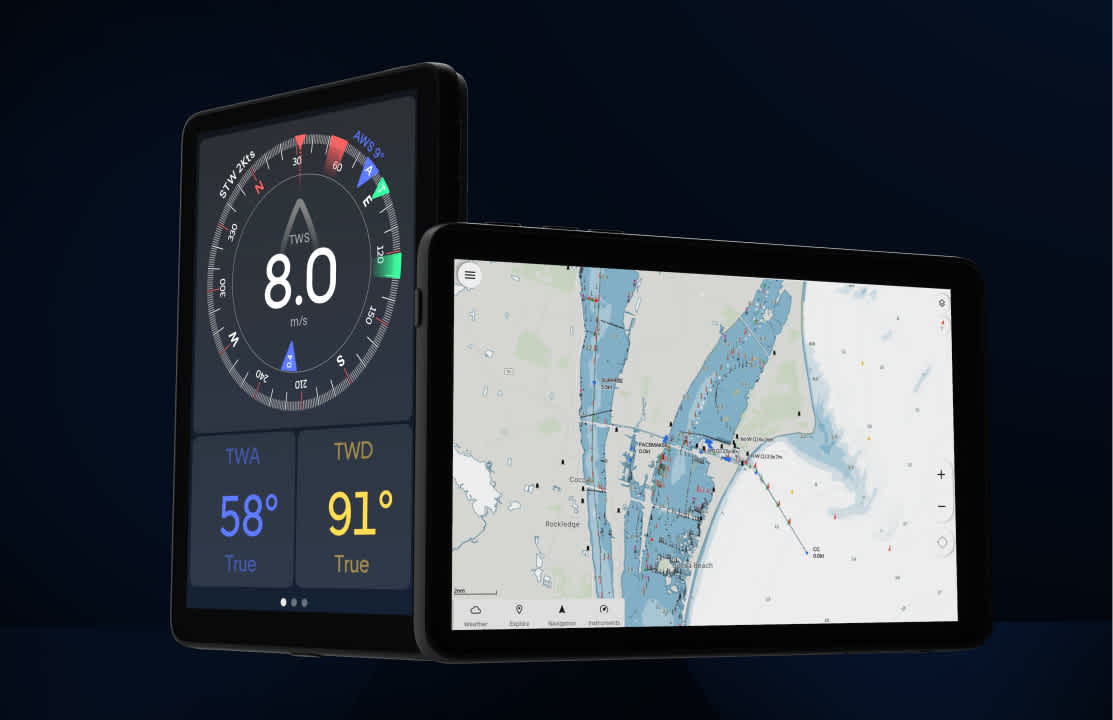
For most boaters, a regular phone or tablet can be a great companion on a calm day at sea. With a great charting app, they are a natural tool onboard many boats.
But when conditions take a turn for the worse – when it starts to rain, gets hot, or the sea picks up – regular tablets quickly reveal their limitations. That’s where marine-grade devices, like the Orca Display 2, come into their own.
Here are the seven key differences that make a marine-grade tablet a better and more reliable choice for modern boaters:
1. Screen Brightness That You Can Rely On
Modern consumer tablets can deliver high peak brightness, but only for short bursts. As they heat up, the screen dims to prevent overheating, making them unreadable in direct sunlight.
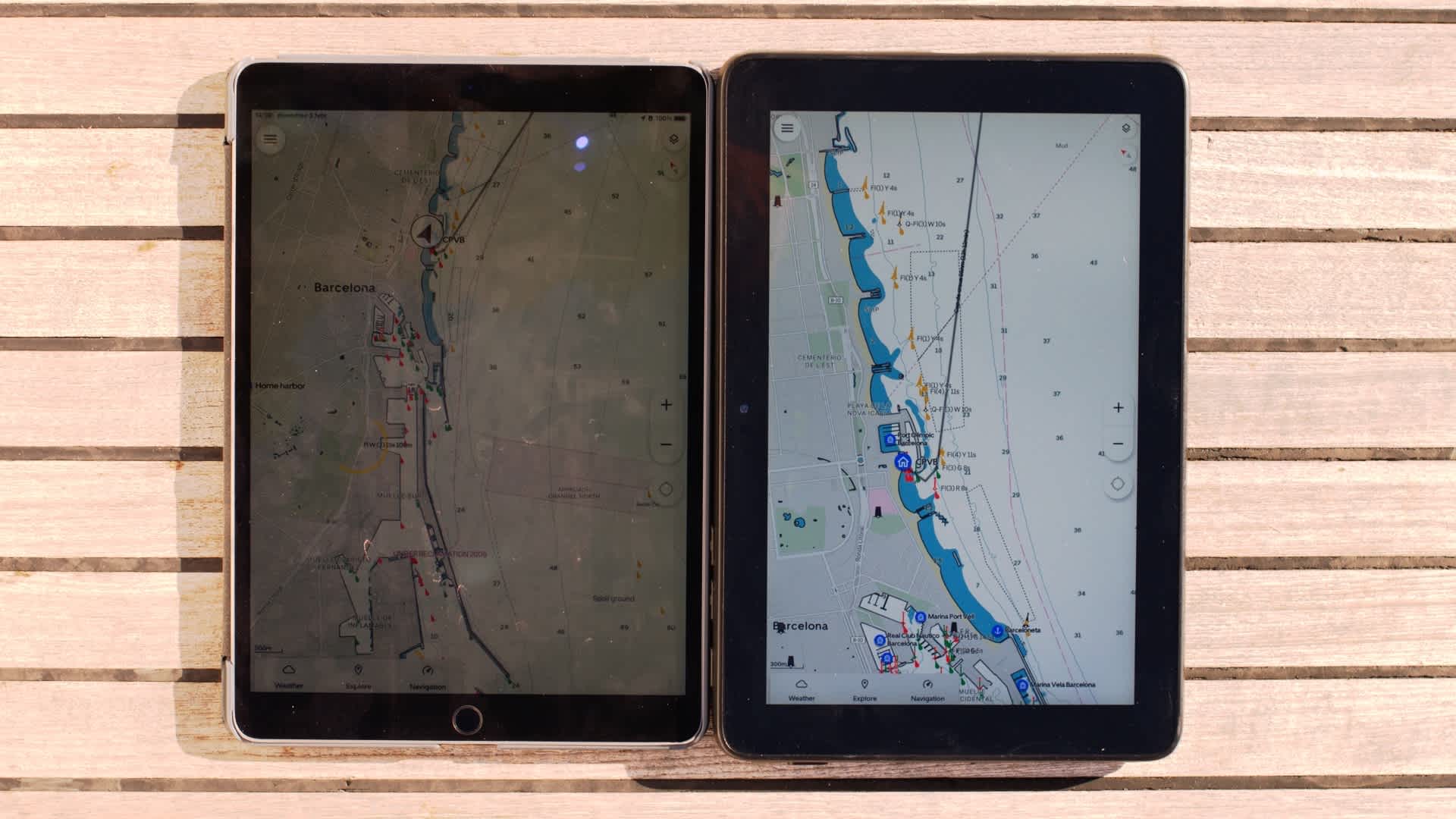
9th gen iPad (left) and Orca Display 2 (right) at full brightness in direct sunlight. After about 20 minutes in direct sunlight, the iPad shut down from overheating.
Orca Display 2 maintains its full 1000 nits of brightness even in high temperatures. Thanks to a thermally efficient design, Orca Display 2 gives you reliable visibility throughout your entire journey.
2. Reduced Screen Glare
Most phones and tablets use glossy screen surfaces that make colors vibrant while indoors. However, this glossy surface reflects sunlight like a mirror, making the screen hard to read.

Surface reflections on the Lumen HDX glass surface before (left) and after (right) the etching surface treatment.
The Orca Display 2 features an etched glass screen that diffuses light and dramatically reduces glare. The result is a screen that remains readable even in sharp and direct sunlight.
3. Polarization That Plays Nice with Sunglasses
If you’ve ever tried to use your phone with polarized sunglasses on, you’ve probably noticed that the screen turns white when viewed at certain angles. That’s due to linear polarization filters used in traditional consumer screens.
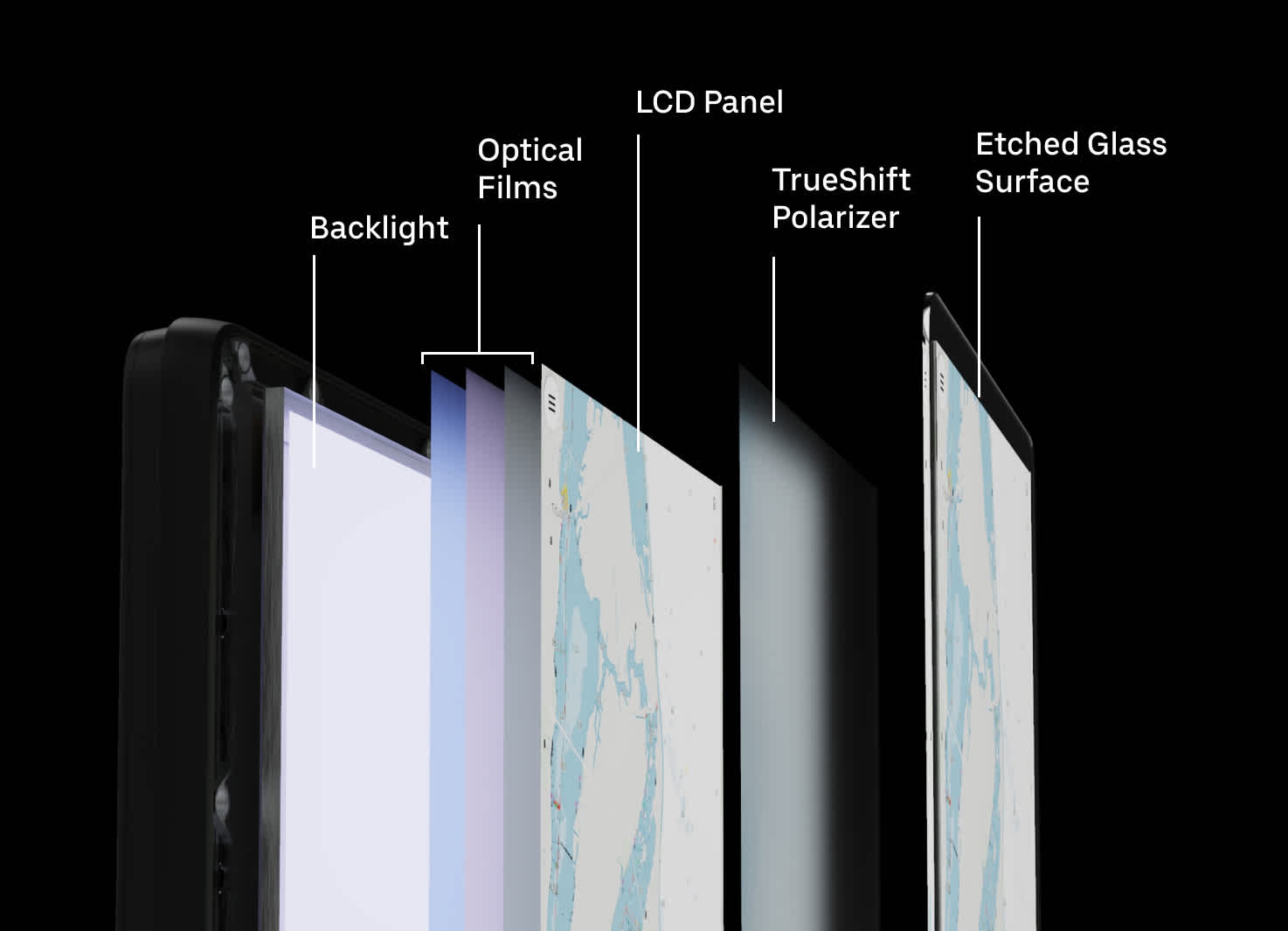
The Lumen HDX screen components.
Orca Display 2's TrueShift polarizer is a circular polarization filter. The filter scatters light naturally, allowing the screen to remain visible from all angles when you are wearing polarized sunglasses.
4. Designed for Extreme Temperatures
Regular tablets are typically designed to work between 0°C and 45°C (32°F to 113°F). Below that range, touch screens may stop reacting to touches, and above the range, devices throttle performance, and potentially shut down to prevent damage to their internal components.
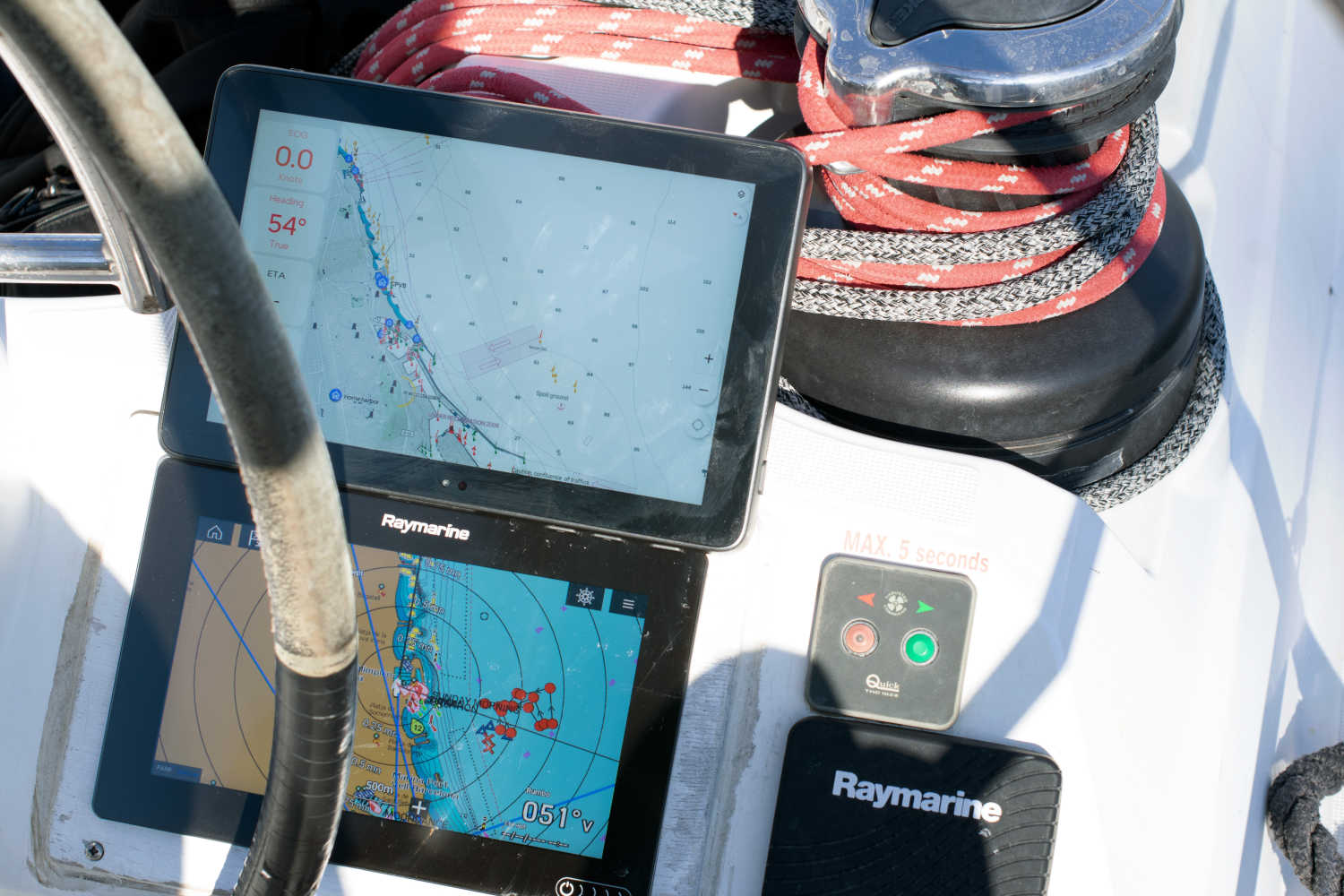
Orca Display 2 (top) and a Raymarine Axiom 2021 (bottom) at full brightness under direct sunlight in the Mediterranean.
Orca Display 2 is built for a wide operational range: -15°C to 55°C (5°F to 131°F). Every component, from the screen to the processor, is built to handle tough conditions, whether you’re sailing in the Nordics or the Mediterranean.
5. Water-Resistant Touchscreen Usability
Even a few droplets of water can render the touchscreen of a regular tablet unusable. On a moving boat, that’s not just frustrating; it can lead to dangerous situations.
Orca Display 2 is engineered to identify and reject touch inputs from water droplets, similar to high-end chartplotters. It lets you interact with your navigation display even when it’s wet, giving you control in rough seas or rainy conditions.
6. Charging Built For Rough Conditions
Charging a regular tablet on a boat usually involves USB cables, which are not ideal in a wet and moving environment. USB ports can short out when exposed to moisture, and cables can get damaged or pulled loose if they snag on ropes or get pulled by accident.
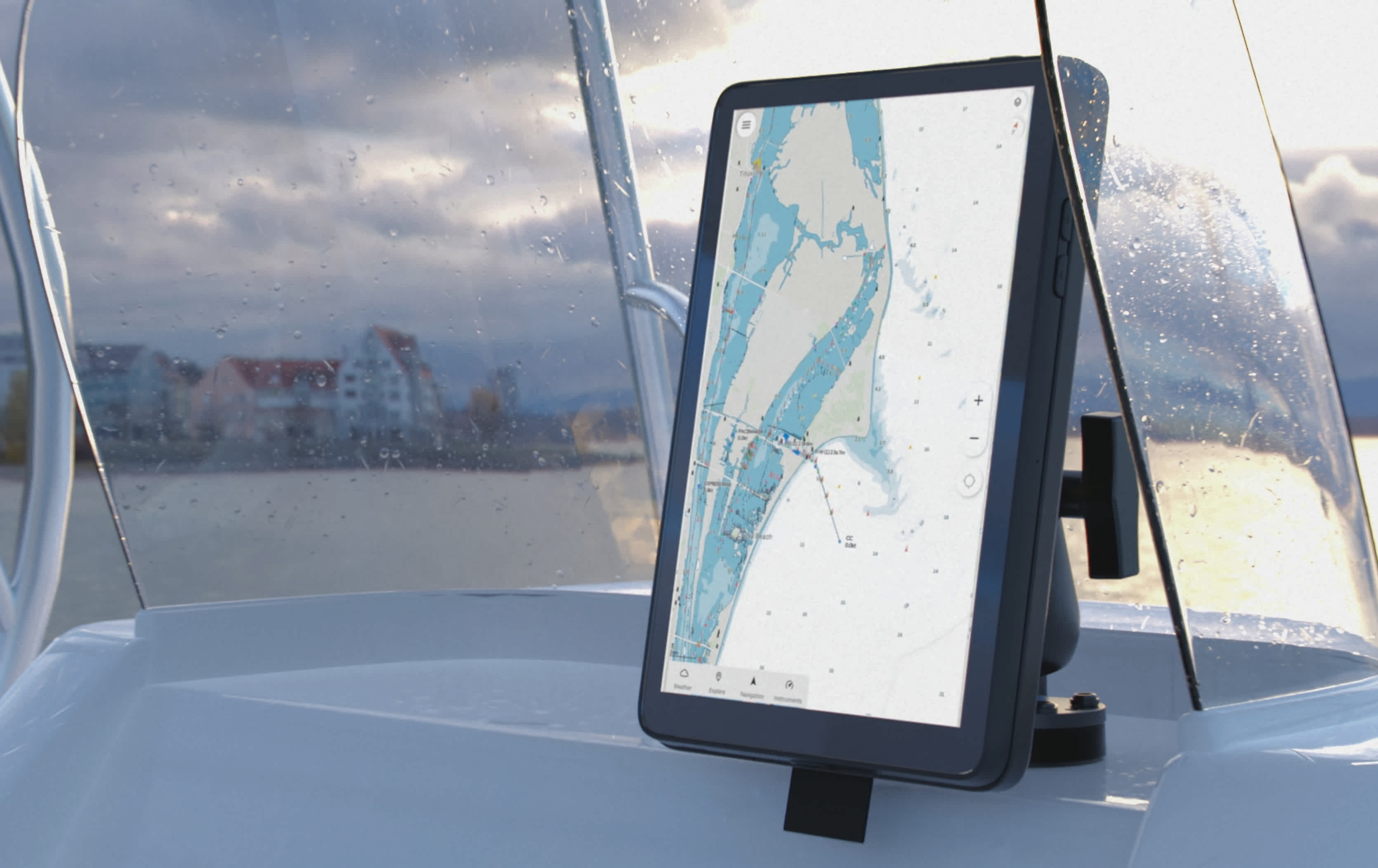
The Charging Mount makes for a clean dashboard and reliable operations.
Orca Display 2 charges wirelessly with a marine-grade wireless charging system. The system delivers 25W, which is able to power the Display 2 at full brightness. With no exposed connectors, no risk of corrosion, and no snag-prone cables, it’s a charging system made for rough conditions at sea.
7. A next-generation GNSS receiver
Accurate positioning is critical at sea, especially in narrow channels and complex coastlines. Regular mobile devices rely on lower-end GNSS and urban tricks like Wi-Fi scanning and road snapping, which don’t work offshore.
Orca Display 2 features a next-generation dual-band L1+L5 GNSS receiver with support for all major satellite constellations, including GPS, Galileo, BeiDou, Glonass, QZSS, and NavIC. With advanced signal processing, it delivers accuracy down to 50 cm, enabling safer navigation, better ETAs, and more precise routing anywhere in the world.
Purpose Built for Modern Boating
Orca Display 2 is the ultimate navigation device for the modern boater. It offers all the advantages of a modern tablet – speed, ease-of-use, and cellular connectivity – while delivering a marine-grade experience similar to high-end chartplotters. Looking for a modern navigation experience? Look no further.
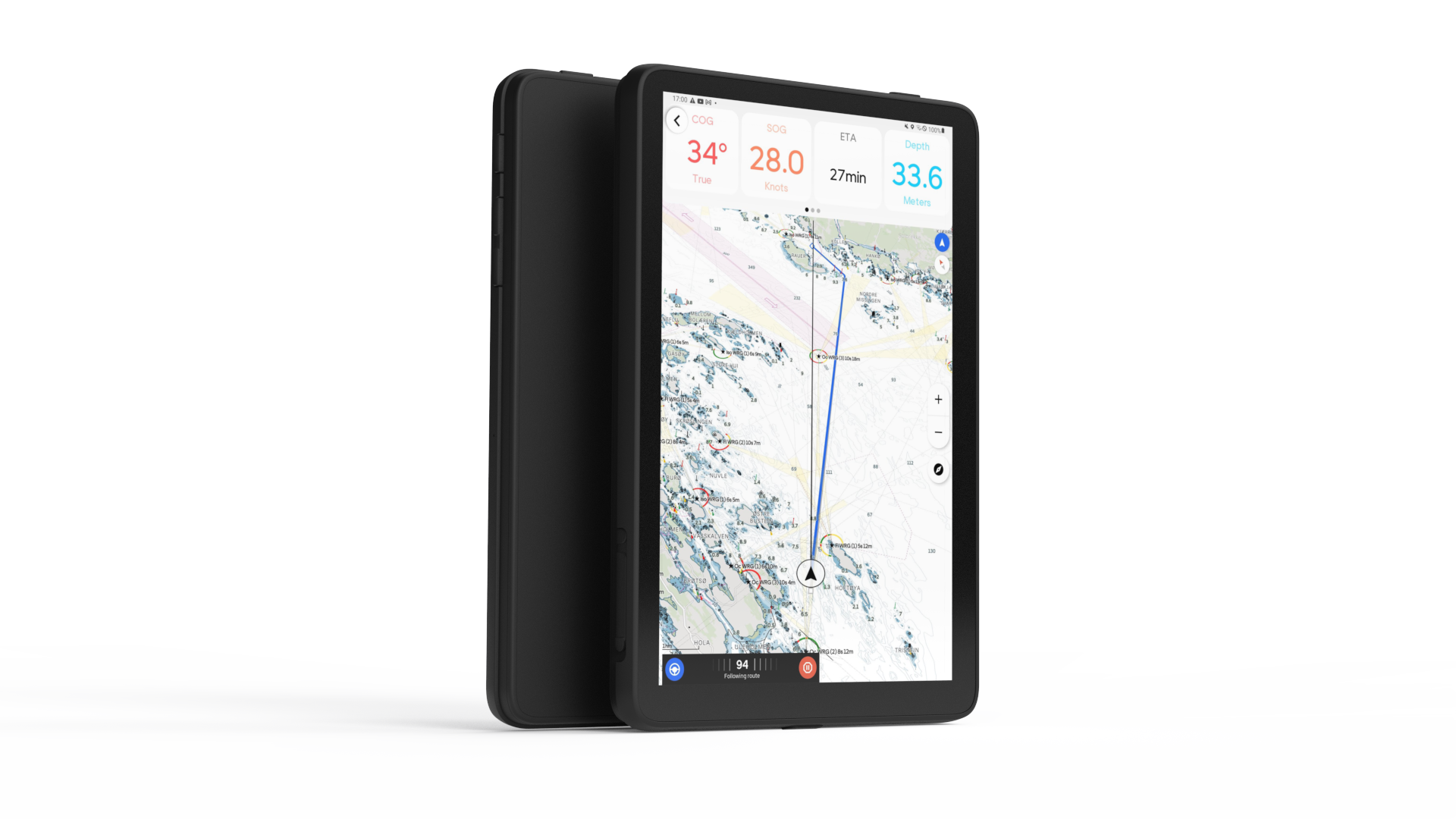
Orca Display 2 is a navigation display for the modern boater.
Order the Orca Display 2 via the Orca Store now – with free express shipping and a 30-day satisfaction guarantee.






